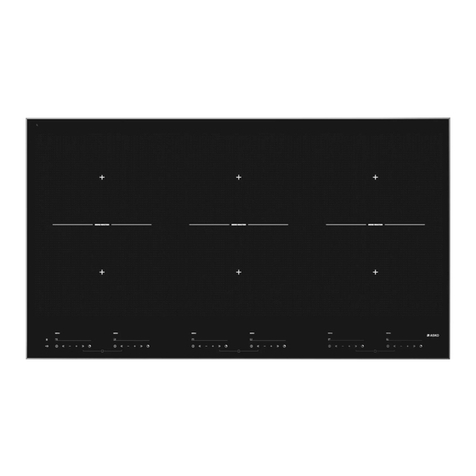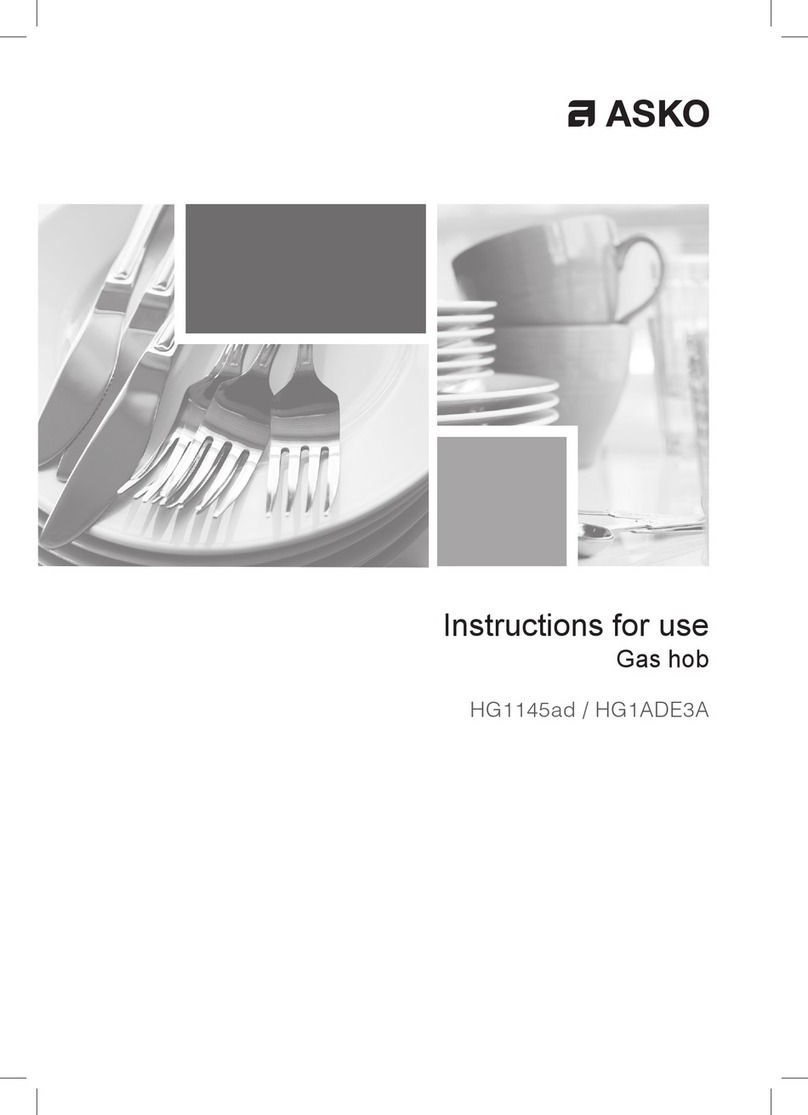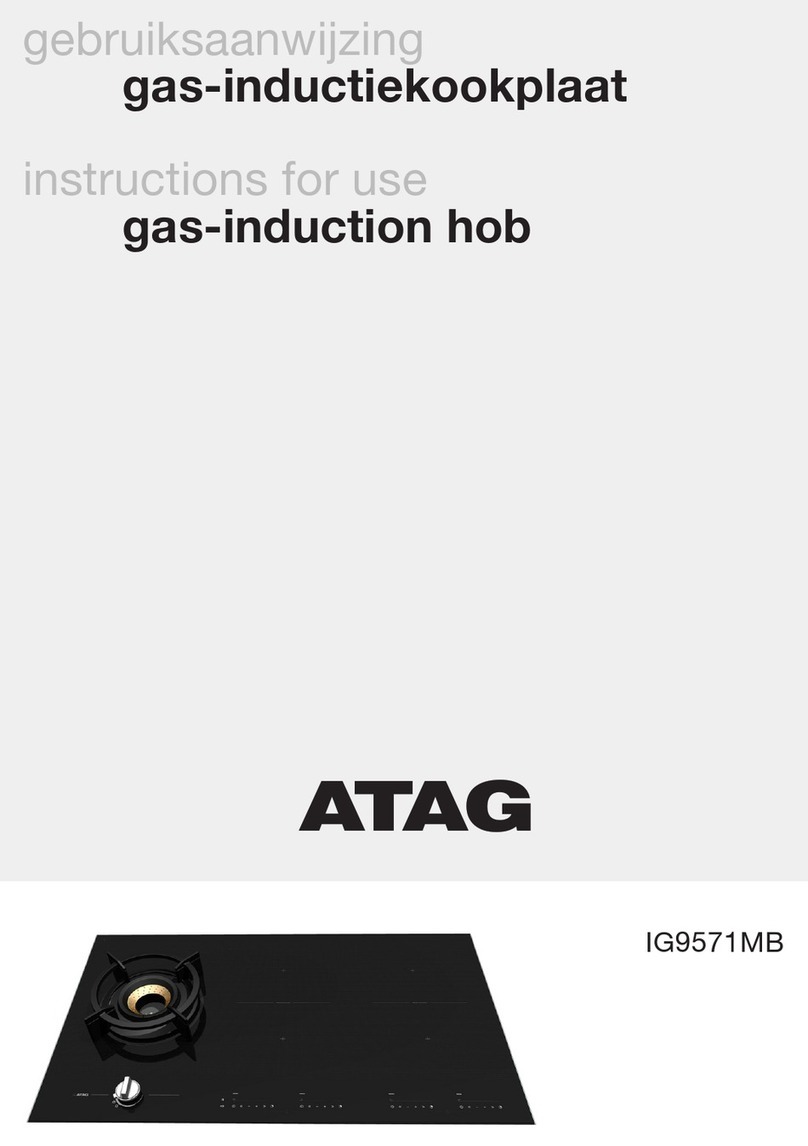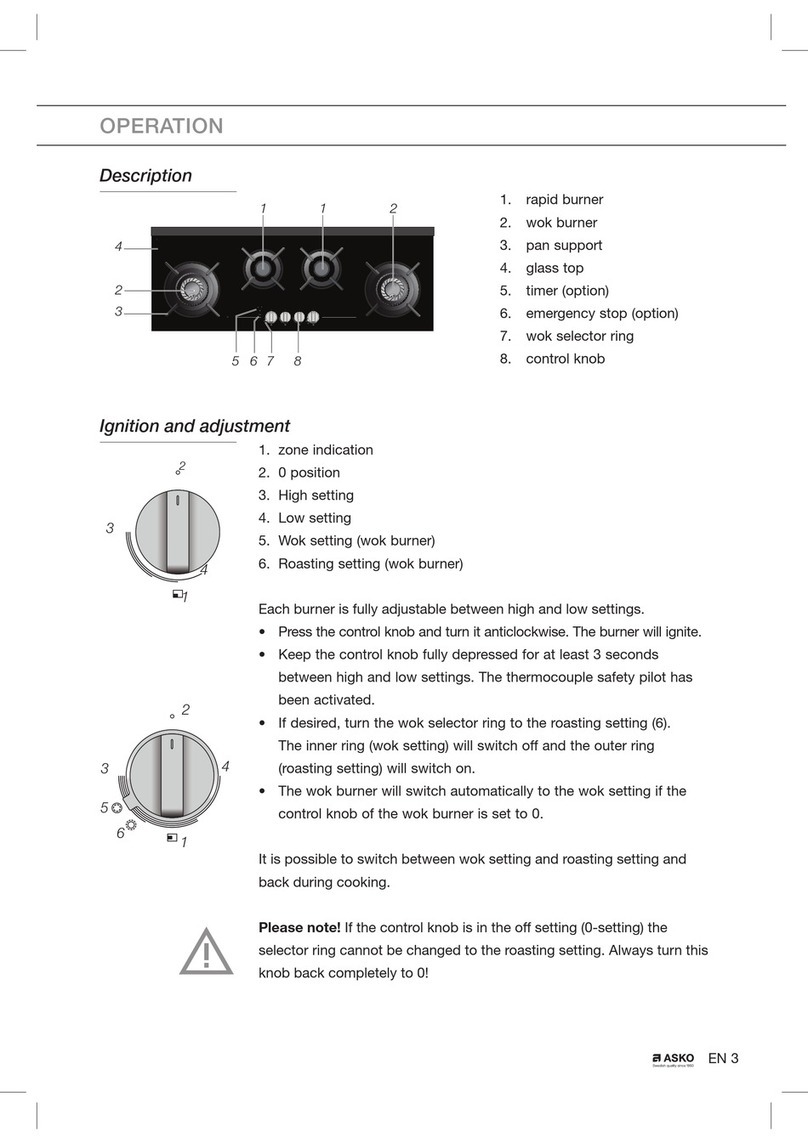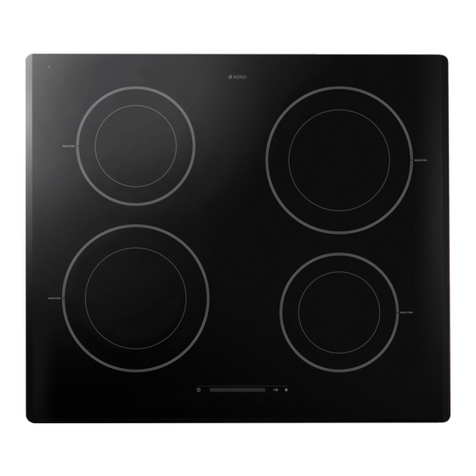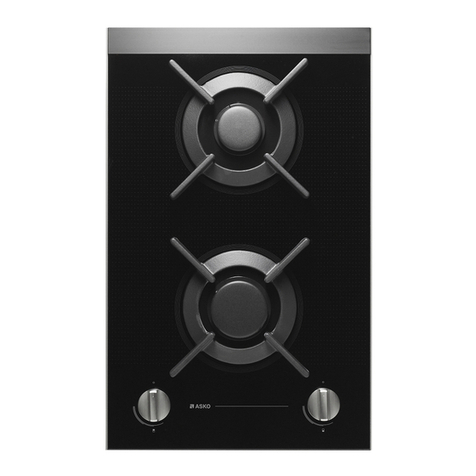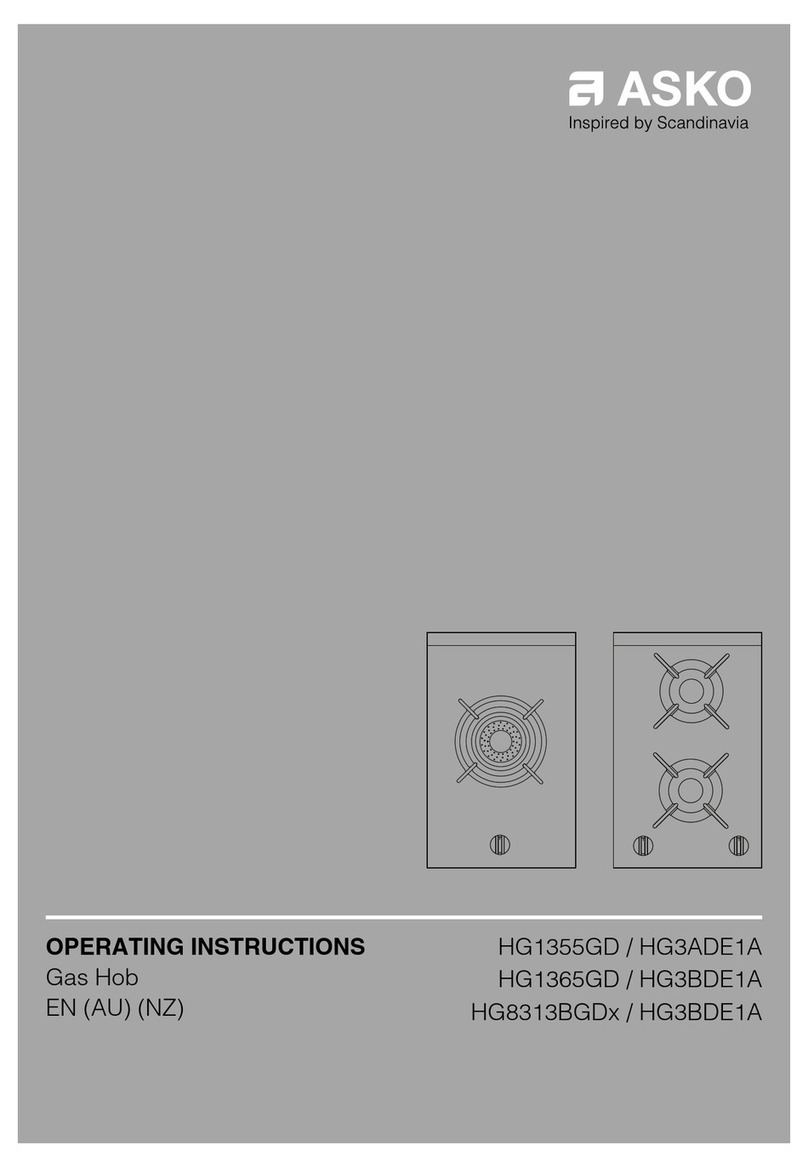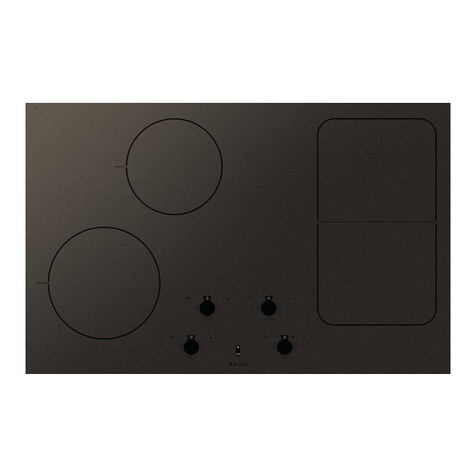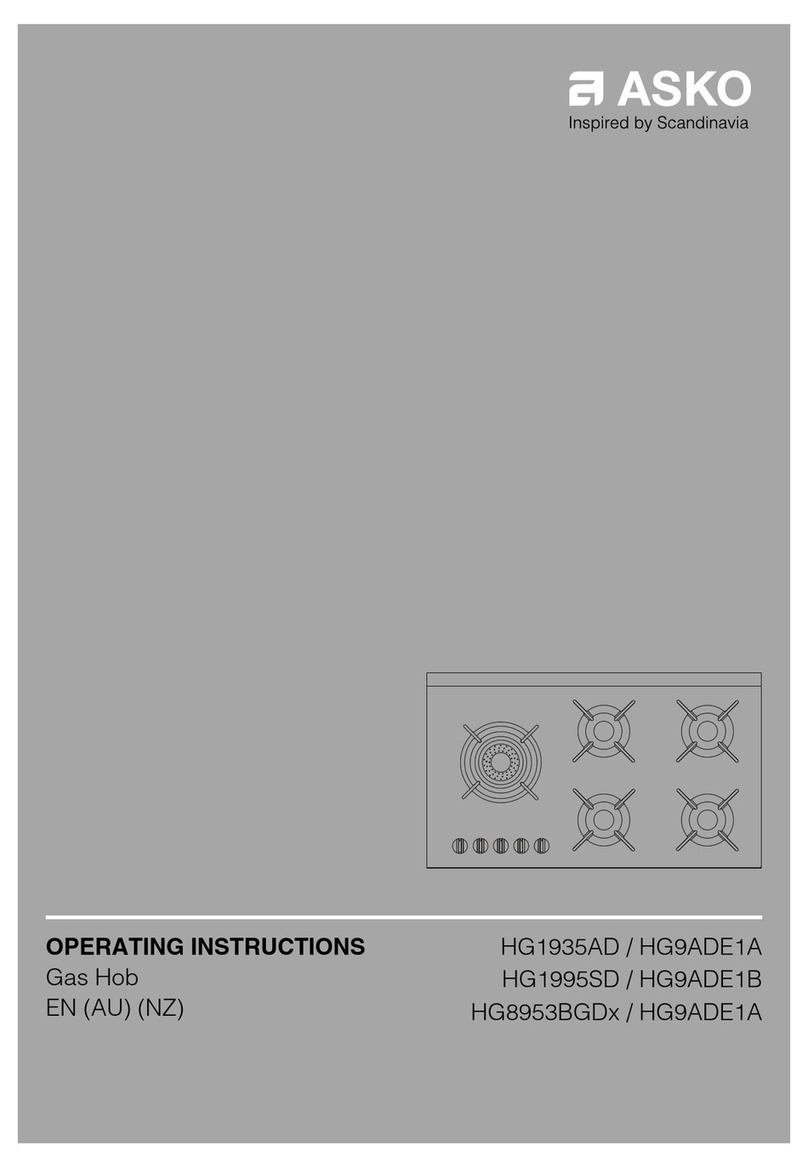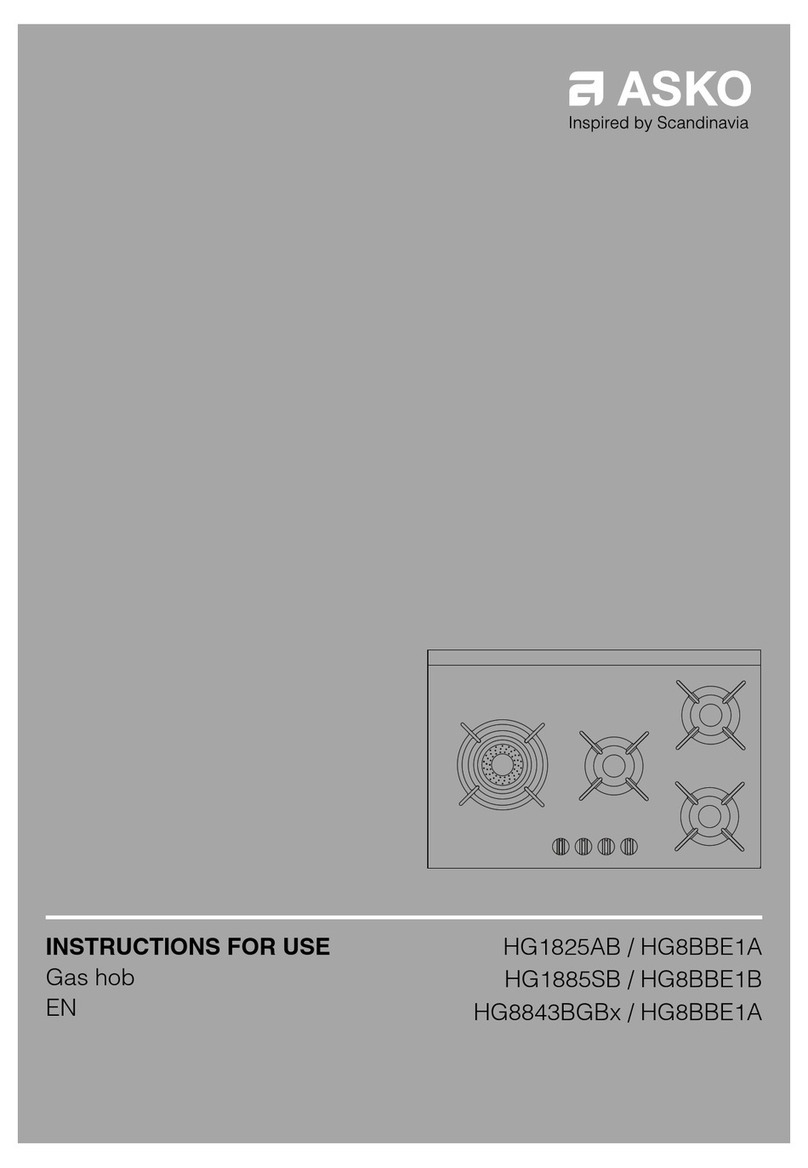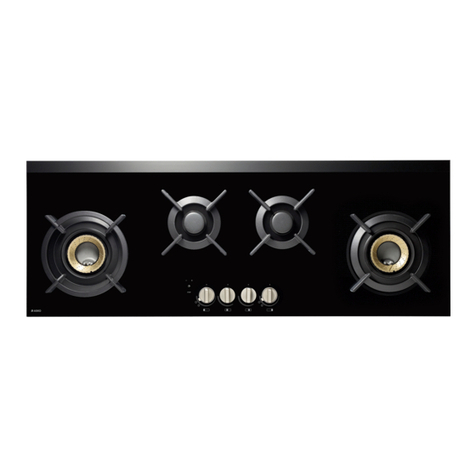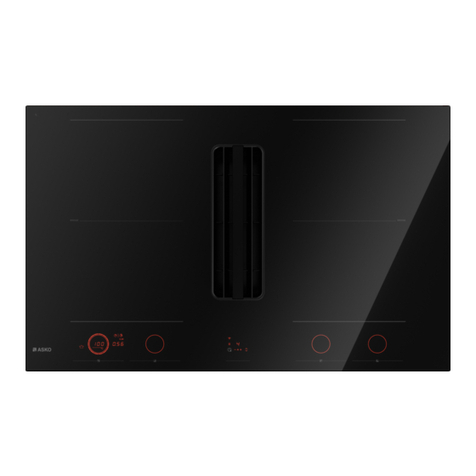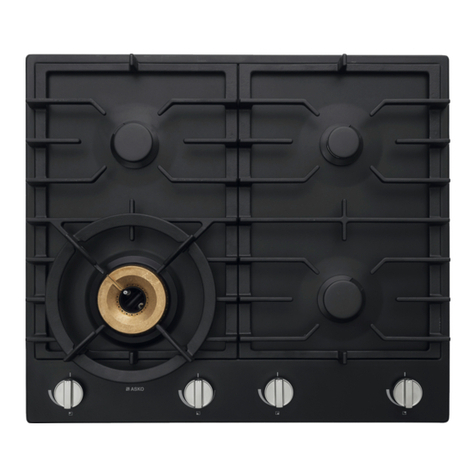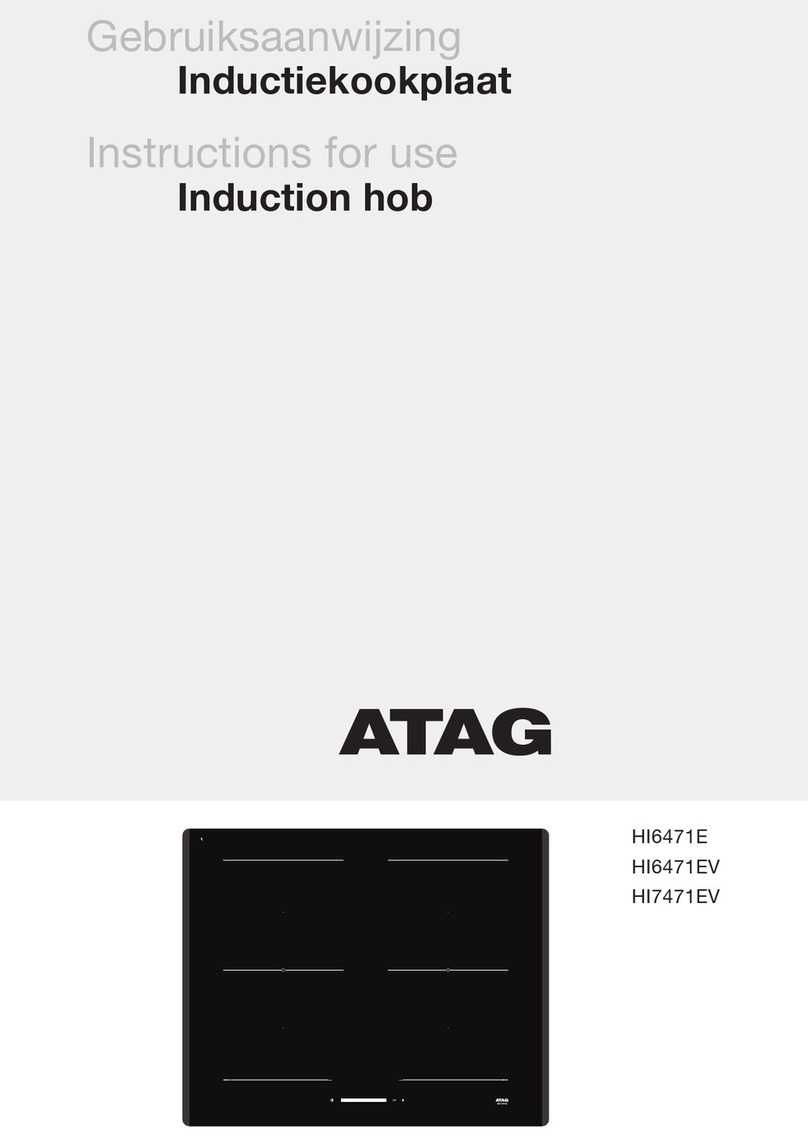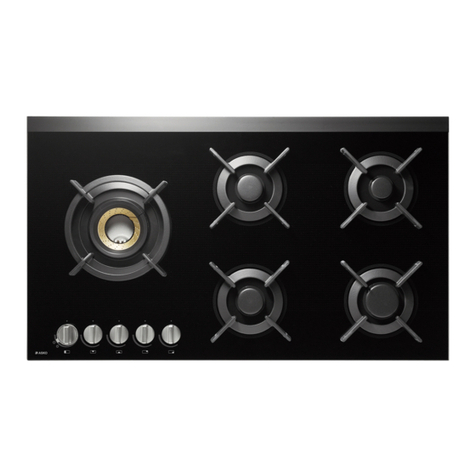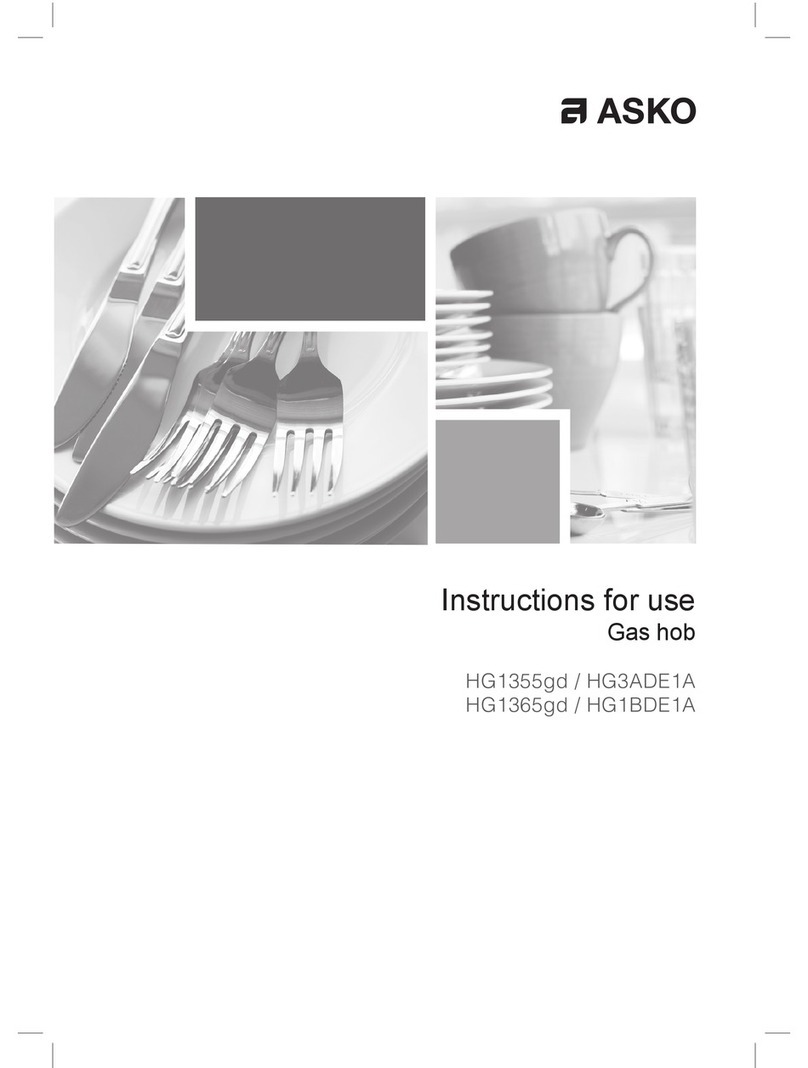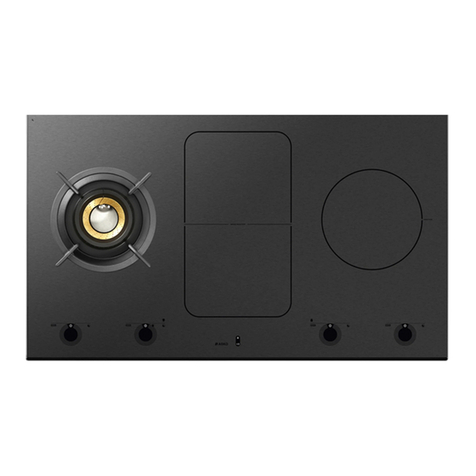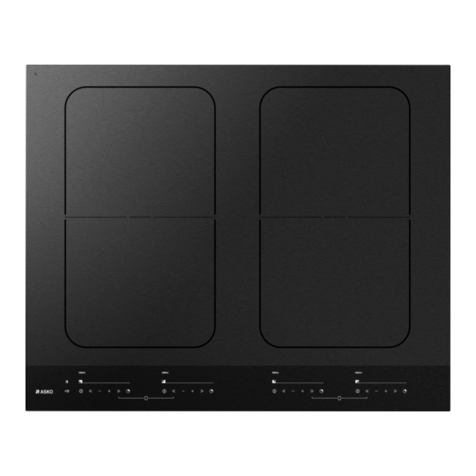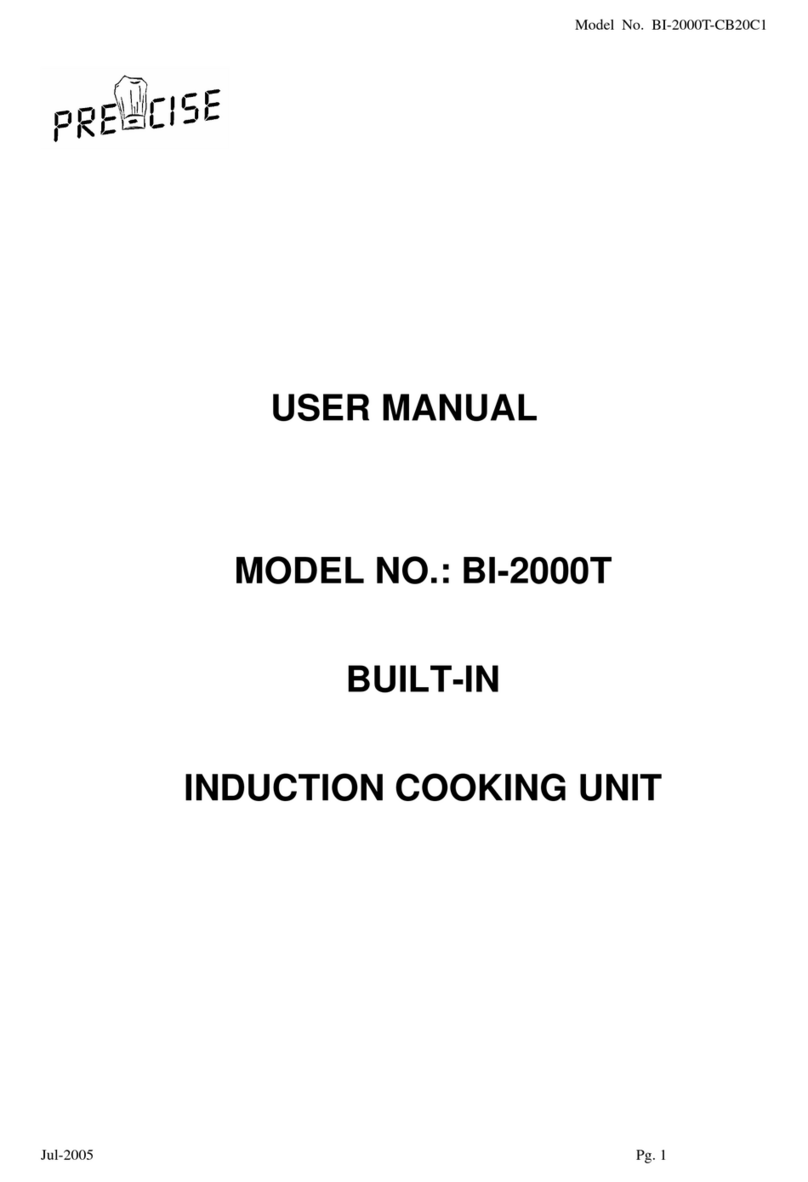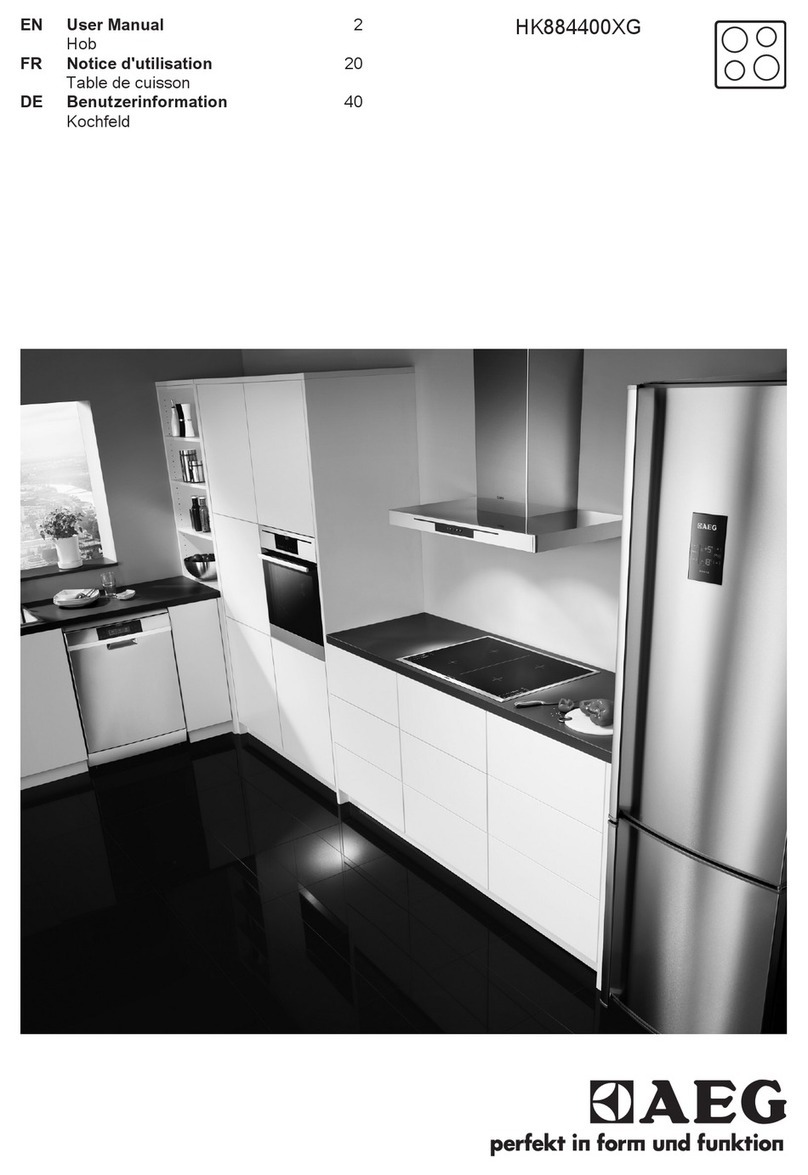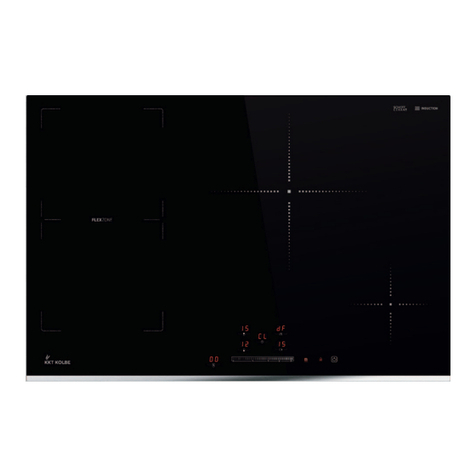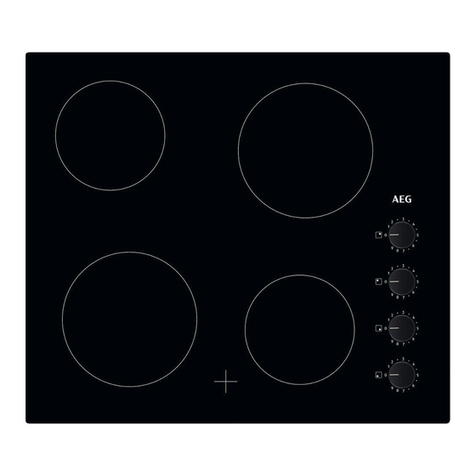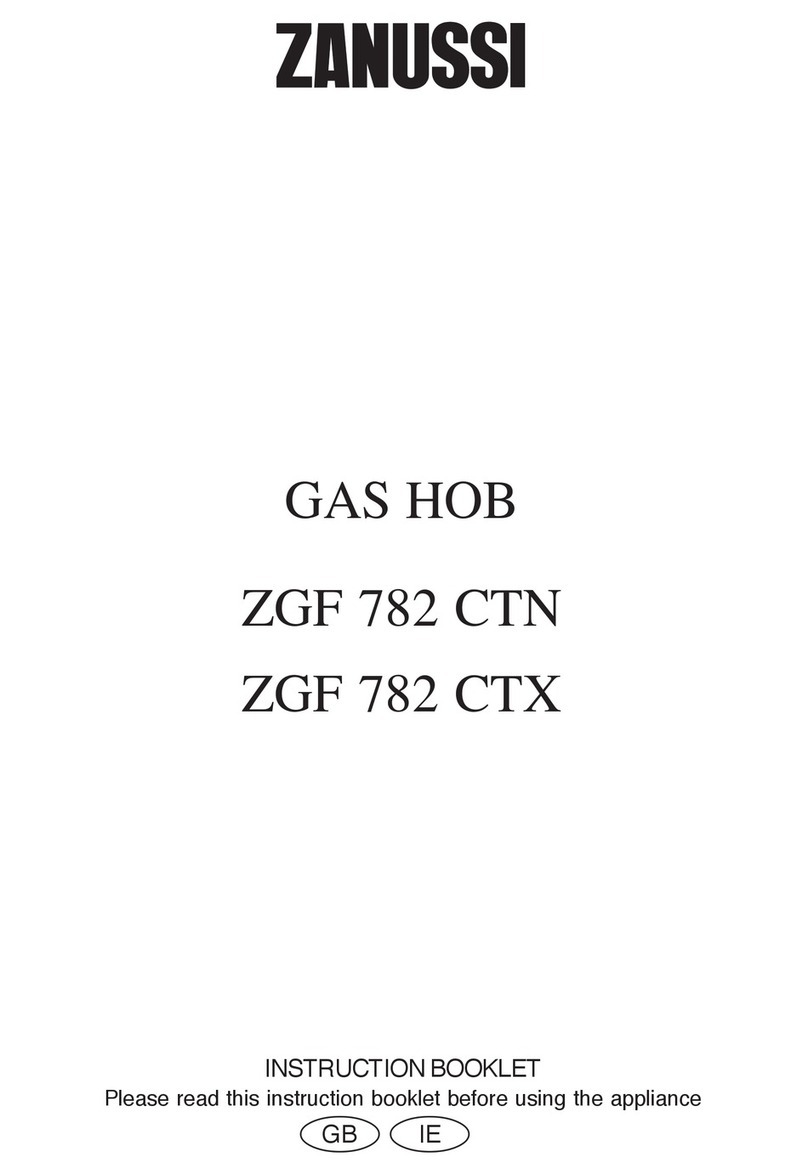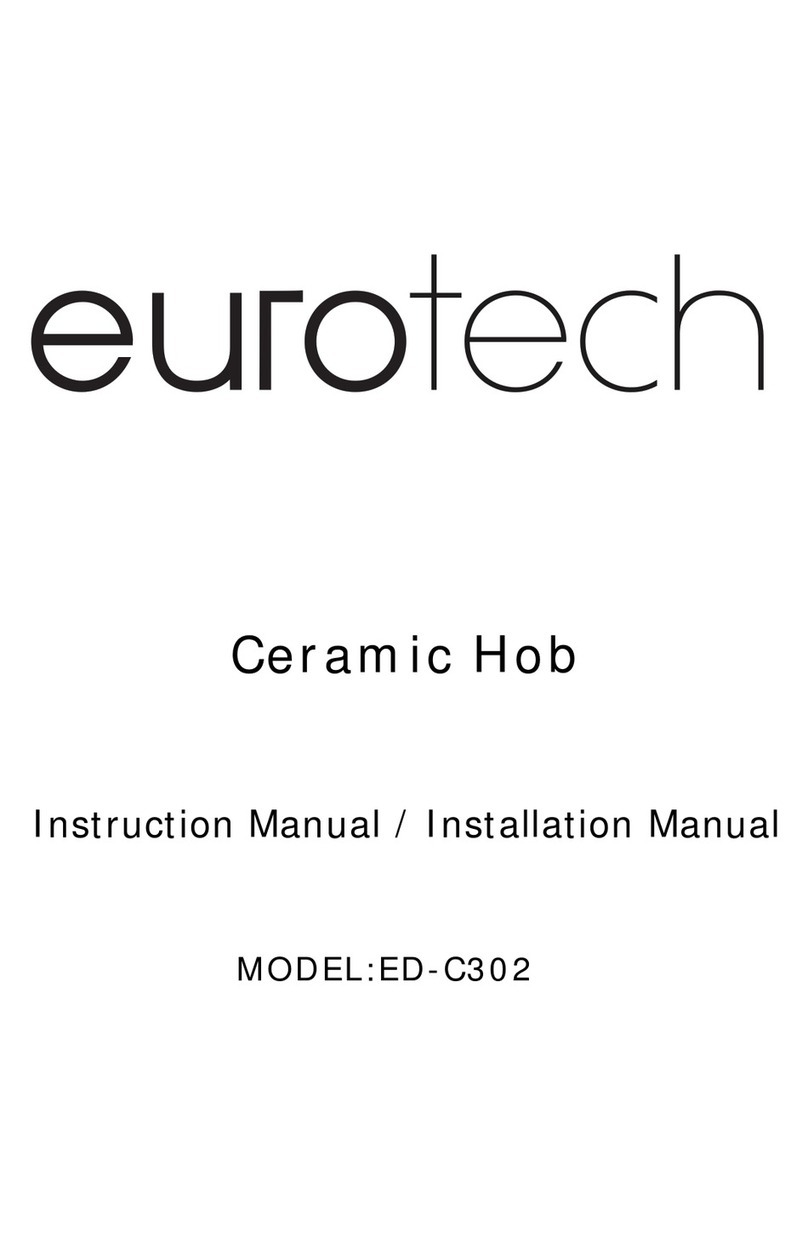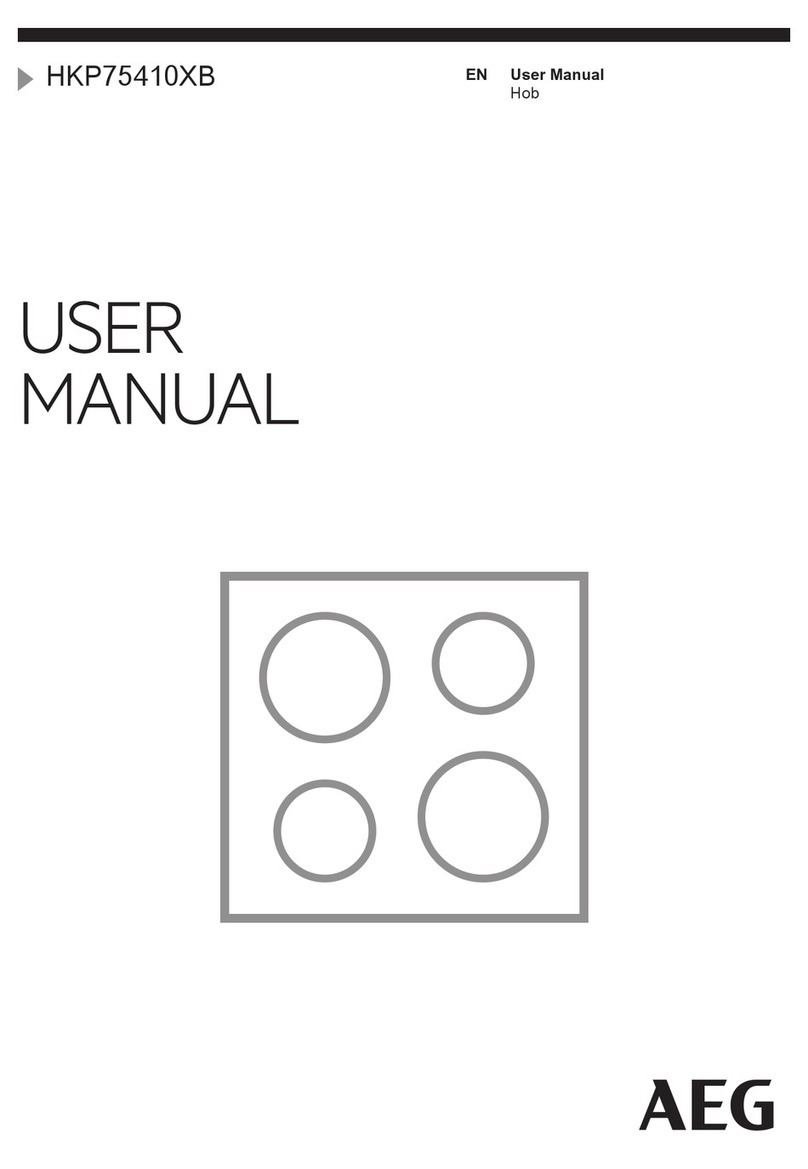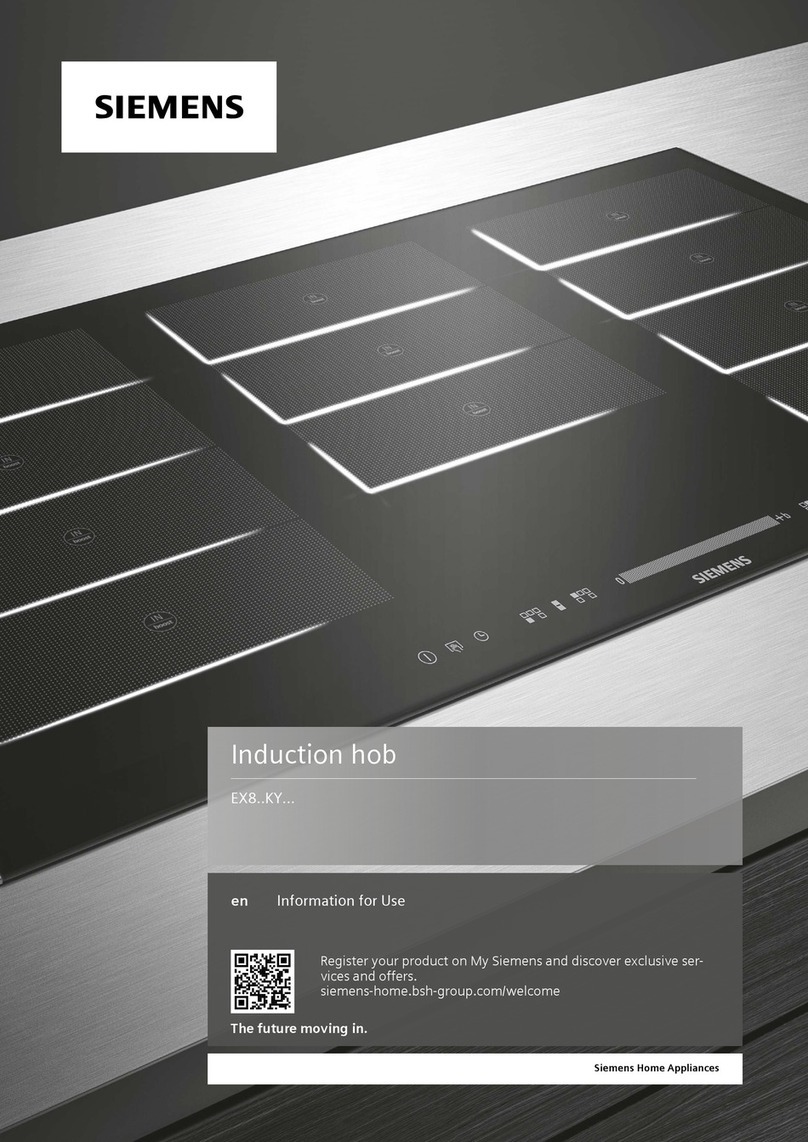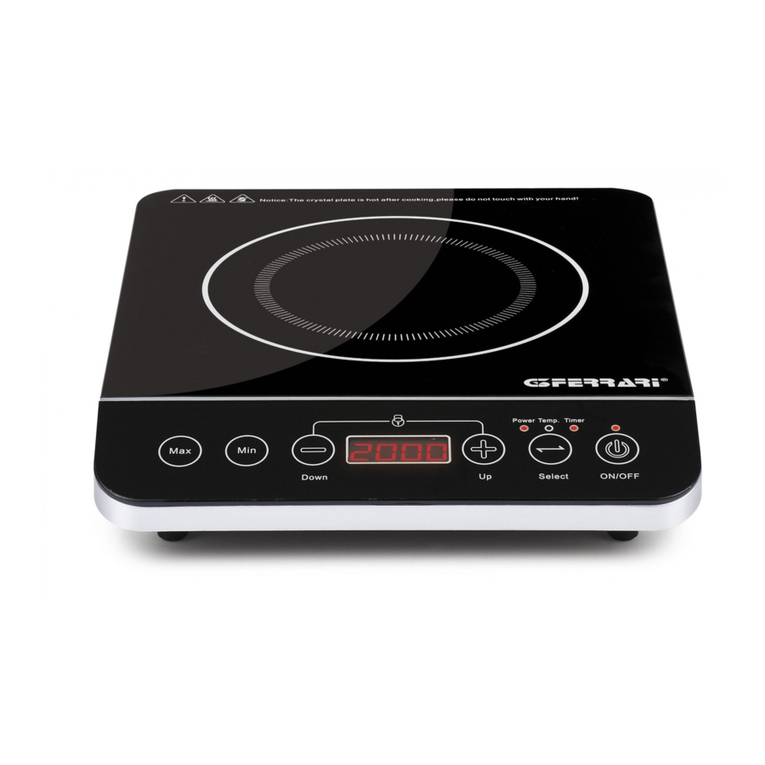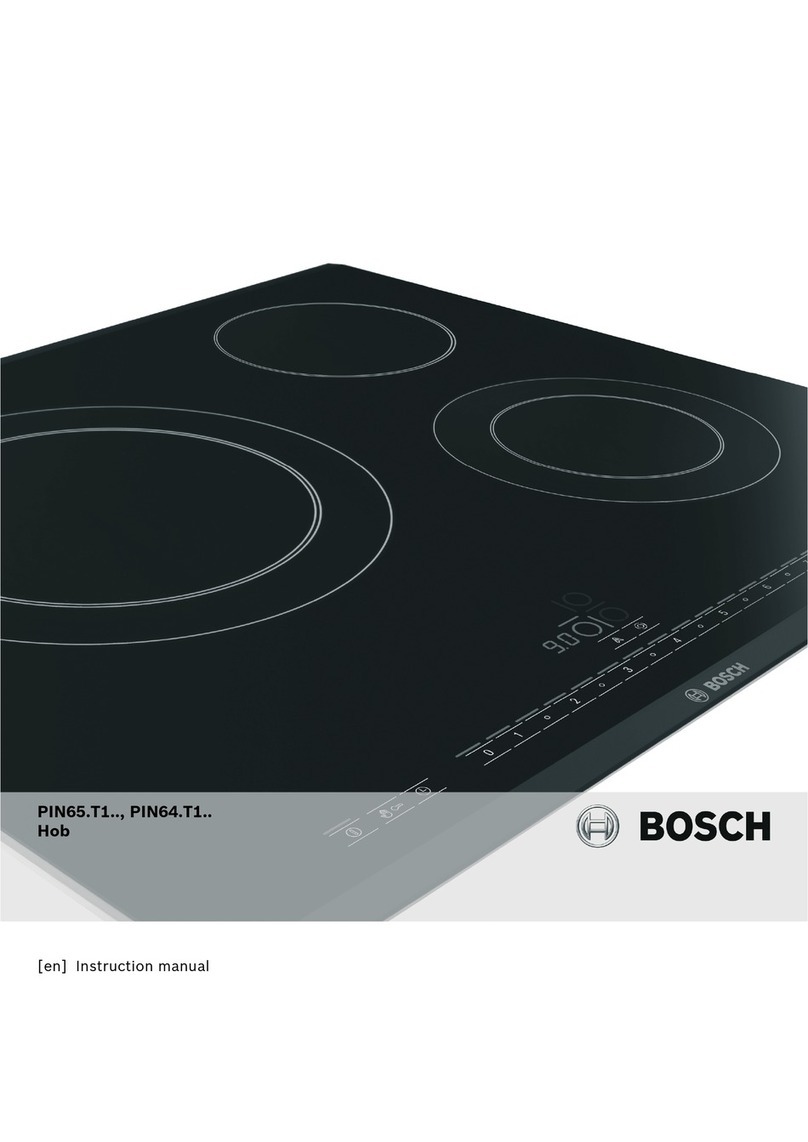EN 8
USE
Operation of the touch-sensitive buttons
If you are used to different controls, it can take time to get used to
operating the hob using the touch-sensitive buttons. For optimum
working, place your finger tips flat on the buttons. You don’t have to
push hard.
The touch sensors have been set in such a way that they only react
to the pressure and size of finger tips. The hob can’t be operated with
other objects and won’t, for instance, be switched on if your pet walks
over the hob.
Induction cooking
Induction cooking is fast
• To start with you will be surprised by the speed of induction cooking.
Especially at higher settings, foods and liquids will come to the
boiling point very rapidly. It is best not to leave pans unattended to
avoid them from boiling over or boiling dry.
The power level adjusts itself
• In induction cooking, only the zone on which the pan is placed
is used. If you use a small pan on a large zone, the power will be
adjusted to the diameter of the pan. The power will thus be lower
and it will take longer before the food in the pan comes to the
boiling point.
Please note
• Grains of sand may cause scratches which cannot be removed.
Only put pans with a clean base on the cooking surface and always
pick pans up to move them.
• Do not use the hob as a worktop.
• To avoid energy loss, always keep the lid on the pan when cooking.
Switching of the power
A feature of this induction hob is the ‘power switching’ with settings
lower than 8. It seems as if a cooking zone switches on and off, but that
is not the case. The zone switches the power on and off continuously;
the zone remains on and at the indicated setting. The two small zones
switch to a lower level than the two large zones.
With induction cooking there
is no heat loss and handles
stay cool.
